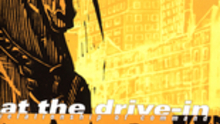“Film licenses have traditionally been disappointing affairs, so much so that the term itself is now often used as a euphemism for poor-quality software.”
So opened Edge’s review of GoldenEye for the N64, back in its August 1997 issue. The snapshot generalisation’s purpose, naturally, was to contrast the typical perception of videogame tie-ins with what was actually offered by the then-new FPS, which was ultimately scored 9/10.
GoldenEye remains a classic to this day – certainly no other Bond-licensed titles have come close to matching it. And the assumption that games based on movies will be sorry affairs has, by and large, remained. Silver screen blockbusters of recent years have been complemented by current-generation releases that haven’t been worth the trade value of the bargain bin they’re so often found in.
2008’s Iron Man movie was both a critical and commercial hit. Sega’s multi-format videogame of the same year? A stinker. Wrote Eurogamer: “A singularly unpleasant experience… The idea that people might turn to this ham-fisted misfire in order to relive the boundless fun of the movie is quite depressing.”
And so it goes, certainly for those with a PlayStation 3 or Xbox 360 beneath their tellyboxes. 2009’s G.I. Joe: The Rise of Cobra wasn’t much of a movie to begin with, but it’s a license that a decent developer, given the right amount of time, could have a lot of fun with. But EA’s third-person adventure for the aforementioned machines romped its way to dismal reviews. Brand-official magazines aren’t known for their dismissive critiques, but the UK’s Official Xbox Magazine called the game “a boring, brain-dead waste of time”.
Rewind a generation and take in the hideous glory of Neko Entertainment’s 2003 Charlie’s Angels for the GameCube and PlayStation 2. Actually, don’t – its Metacritic score of 23/100 is generous. Back to the Future is one of the greatest movies of the 1980s; but Beam Software’s game for the NES, released in 1989 – four years after the movie had been in cinemas – was atrocious. Bob Gale, screenwriter on the film, repeatedly told BTTF fans to steer clear.
Obviously there are exceptions to the rule, a la GoldenEye – not every movie tie-in has been atrocious. 16-bit console owners were treated to some wonderful officially licensed games in the 1990s.
 Aladdin: a true 16-bit classic
Aladdin: a true 16-bit classic
Konami’s Batman Returns for the SNES, released in 1992, was a Streets of Rage-style side-scroller that came highly recommended. Virgin’s Mega Drive version of Disney’s Aladdin, a 1993 chart hit, was a sublime platformer which holds up today, its colourful graphics and fluid animation still impressing.
The Treyarch-developed Spider-Man 2 for the GameCube was a great sandbox affair that opened New York up to the player and allowed them to sculpt their own storyline, taking in main missions and side quests as they pleased. In the 1980s, Ocean enjoyed a run of decent tie-ins, producing well-received games based on Short Circuit, Cobra, Rambo and RoboCop.
A shortage of development time on movie tie-ins is most often cited as the reason for shoddy end products. The most famous example of a super-tight deadline hamstringing a game’s potential happened way back in 1982.
Atari acquired the rights to make an adaptation of E.T. the Extra-Terrestrial. The movie was a monster hit in the summer of ’82, and Atari needed to move fast to capitalise on the buzz surrounding it. Their own Atari 2600 console had been available since 1977 and was on its way to total sales of over 30 million units. A successful film, a console already in the homes of millions… what could go wrong?
Everything. Development began in July, lasting no more than six weeks, and the game was released in December in time for Christmas. Even though it’d received little to no testing before its public launch, Atari’s E.T. was expected to be a hit, lead developer Howard Scott Walker confident in his work even when Steven Spielberg was less-enthused.
Sure enough, the sales were high – the total figure is somewhere around the 1.5 million mark. But Atari had got carried away, manufacturing way more cartridges than were demanded. Terrible reviews put pay to decent sales after the Christmas rush – in 2006, PC World named it the worst game of all time – and Atari was left with somewhere between 2.5 and 3.5 million unsold cartridges. It spelled financial disaster for the developer, and contributed directly to the massive recession that hit the gaming industry in 1983.
Games ‘enjoying’ a protracted development period can be just as awful as those rushed out to coincide with a movie’s box-office impact – Duke Nukem Forever, anyone? But every so often something magic happens. A movie tie-in gets delayed. It misses its window of synergy, evolves into something unexpected, and becomes a standalone event of its own.
Alien Resurrection appeared in cinemas in late 1997. The fourth movie of the hugely popular Alien series, it saw a return to the action of the second, James Cameron-directed film after the more ponderous tone of the perhaps unfairly maligned Alien 3. (If you’ve not seen the 2003 Assembly Cut, your opinion is void.) Grunts and guns, xenomorphs and acid all over the shop: it didn’t have critics doing back flips, but neither did it perform badly.
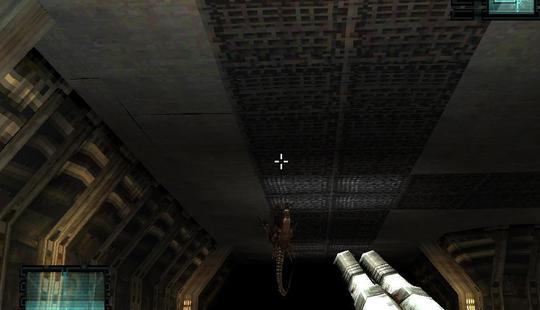 Alien Resurrection: grainy, but just a little bit great
Alien Resurrection: grainy, but just a little bit great
The game of the film was the responsibility of Argonaut, a London-based developer whose greatest contribution to the videogame industry is the Super FX chip, designed for Nintendo in 1993 to improve the SNES’s 3D capabilities. No Super FX chip, no Star Fox, and certainly no Doom on the SNES. Work on Alien Resurrection began with the aim of releasing it alongside the movie – but a complete redesign and rotating cast of lead designers saw it slip in the release schedules. And slip. And slip again. Eventually, the game arrived in stores in December 2000, exclusively for the PlayStation – and just in time for the PlayStation 2’s first Christmas.
The game’s late release, for a console eclipsed by its powerful, popular successor, resulted in paltry sales, and a Dreamcast port was canned. But Argonaut’s labour of love (and, undoubtedly, a few near-breakdowns) enjoyed a spread of critical acclaim. Games Radar awarded it a perfect score. Edge gave it 8/10 and ran a Making Of… piece in September 2007. In the latter article, Alien Resurrection is summarised as “one of the most atmospheric and suspenseful movie tie-ins ever” with “phenomenal audio design”.
So ‘delayed’ movie tie-ins can be must-play experiences. And the Alien series has had its share of solid games: Alien 3 became a scrolling shoot-em-up (with a side-portion of prisoner rescuing) on the Mega Drive and earned itself an 89% rating in issue 24 (September 1992) of Mean Machines. The SNES version of Alien 3 was even better, a multi-activity exercise in staying alive, where equipment required repair, captives needed saving, and bugs swarmed to be zapped. This effort places first on Topless Robot’s list of Alien-related games. Probe developed both 16-bit Alien 3 games, and their 1996 FPS Alien Trilogy for the PlayStation and Saturn was no slouch either, critically or commercially.
Which brings us to another Alien title that’s had its ups and downs since being formally announced in February 2008. Aliens: Colonial Marines, out now for PC, Xbox 360 and PlayStation 3, began when Sega and Gearbox – the developer behind the excellent Borderlands and its sequel – got together in late 2006 to work on a new game for the franchise. Its story, engineered as a sequel to 1986’s Aliens, has parallels with a cancelled EA-published PlayStation 2 title from 2001. But a return to the eerie, empty corridors of the U.S.S. Sulaco and properly shaken and baked surrounds of Hadley’s Hope on LV-426 is a no-brainer for anyone looking to follow the events of James Cameron’s movie.

Fantastic Five: Chipzel
Time for an intermission. This month’s Fantastic Five – an artist’s five favourite games from any era, on any platform, and a few words on why – comes from Niamh Houston, aka Chipzel.
The Northern Irish musician has been trading in banging chiptune tracks for some time – but she achieved a real breakthrough into a wider audience when she soundtracked one of the very best games of 2012, Terry Cavanagh’s Super Hexagon (included in Savage Pixels’ best of the year).
One of the Super Hexagon tracks, ‘Focus’, can be heard above – the ‘Super Hexagon EP’ is available from the Chipzel Bandcamp page. Houston releases a new album at the end of March, and her touring activity will take in Nintendoom 2.0 in Belgium on February 24. So if you’re in the vicinity…
The Elder Scrolls IV: Oblivion (Xbox 360/PS3, Wiki)
“This has to be downright my favourite game ever. Although I do wish I'd had an original Xbox when I was younger to have gotten into Morrowind first. I actually only bought Oblivion because I was looking for an new RPG similar to Fable II and managed to snatch it on eBay for about £4, which was money very, very well spent. It's such a fantastic game; the soundtrack is so heart-wrenchingly beautiful, the world itself is so colourful and pretty and you really get involved with your character throughout the game; I always opt for the Elvish race with stealth and archery. I can't even begin to imagine how many hours I put in before a software update deleted my save file. It was like losing a child. Skyrim was definitely a worthy follow-up but I don't think it will ever out-do my love for this game.”
Pokémon Blue (GBC, Wiki)
“I remember when I was about eight, I finally managed to save up the money to buy a Game Boy Color and a copy of Pokémon Blue. I even remember all the little details, like reading through the manual whilst going through the Professor Oak speech and how excited I was. I'm sure most people can relate to the nostalgia of playing Pokémon. I still play it every from time to time and it's always just as good. The new releases are great, but they'll never beat the original 150 Pokémon.”
Disney’s Aladdin (SNES, Wiki)
“So much nostalgia for this game, it was amazing. Every little sound effect and the entire soundtrack bring back so many memories of when I used to play it as a kid. I wasn't so hot at gaming though and would die like every five minutes, meaning the majority of what I remember is Aladdin shouting ‘Wow’.”
Civilization V (PC, Wiki)
“I only recently got into the Civilization franchise. The fifth in the series accompanied with the Gods & Kings expansion is fantastic though. I really enjoy learning about history and this game kinda pieces everything together, as well as being really frustratingly fun. My boyfriend actually came home to me playing this recently and I was getting really wound up at the computer after the country next to me decided to order a load sneak attacks and go to war with me. It's very easy to get sucked into...”
Ni No Kuni: Wrath of the White Witch (PS3, Wiki)
“Although this is only just out in the UK, I've been anticipating it for the past month or so and it's quickly become a favourite. I just got it at the weekend and didn't stop playing it until early Monday morning. It combines most of what I enjoy in role-playing games as well as having similarities to Pokémon, which is awesome. The artwork and creativity of the story, accompanied with the soundtrack make it an absolutely beautiful and fun game to play.”
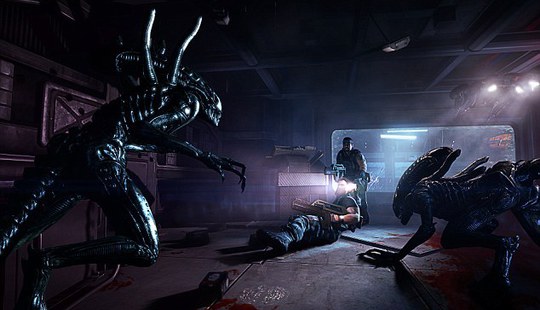
Review: Aliens: Colonial Marines
(As played/tested/whatever on Xbox 360. Apparently the PC version is the one to opt for.)
(Also: may contain spoilers.)
By now, anyone with the slightest interest in this long-awaited ‘sequel’ to Aliens will be acutely aware of its poor reception in the press. A common criticism is its visuals, with quite unprecedented differences between demo ‘gameplay’ footage and the final product posted on online. (Here is the original VideoGamer.com comparison.)
But graphics alone do not a great game make. Even the best-looking current-gen titles can prove to be unsatisfying experiences – id’s Rage springs instantly to mind. So this game’s developers could be forgiven the muddy textures, clunky animations and numbing asset repetition if_ the _Colonial Marines gameplay was worthy of its heavyweight license and fulfilled expectations of players with plenty of alternative horror/shooter options, Dead Space 3 having topped the UK multi-format sales chart upon its early February release.
The original Dead Space, released in 2008, stole more than a few tricks from Alien and Aliens – but despite its barefaced cribbing of sci-fi-does-horror cinema, it managed to merge action with suspense successfully. At times it was bloody terrifying. None of this is true, though, of Colonial Marines. Which is a hell of a shame as things open so promisingly.
The player, after a little introduction where cryo-tubes are popped open and orders barked, begins by creeping around the innards of the Sulaco. You’re following life signs on an authentically bleeping motion tracker (which you can’t look at while using a firearm – even a little pistol… odd) in search of other surviving marines. You find one. You already know the scene before you’re in it: he’s held tight by some sort of secreted resin. And then a single alien intervenes.
This encounter is about as tense as Colonial Marines gets, and you’ll be past it ten minutes after the title screen. You – as a marine called Winter – manage to injure the ‘xeno’, landing a lucky hit, and it scurries away. And there it waits, somewhere… You flip up your tracker again. Your heart is actually beating pretty briskly. It’s dark in here, and your flashlight is next to useless. And then it’s on you, but you manage to unload a couple of pulse rifle bursts into its teeth, and it slumps down, defeated.
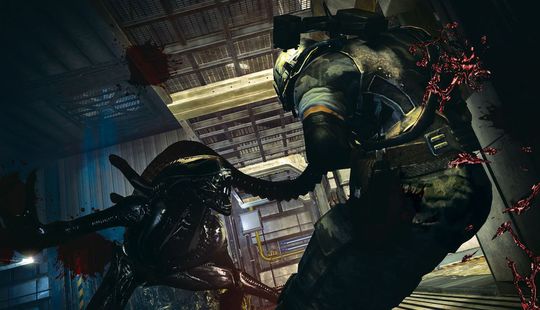 Colonial Marines: the actual gameplay is a bit like this... a bit
Colonial Marines: the actual gameplay is a bit like this... a bit
What happens next certainly doesn’t impress, as the game becomes a series of standoffs against alien waves of various sizes. They do come out of the walls, the goddamn walls, just as they drop from ceilings and burst up through the floor. But there’s no cunning to these beasts’ AI. They see you, they attack you – sometimes from the front, sometimes the back, but always in a straight line. You shoot them, they fall down, others take their place. This is no bug hunt – here, the bugs come straight to you, begging to be blown into itty-bitty acidic chunks.
First stage cleared, something unexpected happens – other guys with guns, not to be confused with your own idiotic AI colleagues, show up on the Sulaco. And what’s really galling is they’re more of a threat to your progress than the Alien series’ prime antagonists. When an alien pops up unexpectedly, you can batter it away with a melee move (because that was always effective in the movies), and follow up with some firepower. Miss one of these Weyland-Yutani mercenaries, or PMCs, and drop your guard, and it’s game over; cue lengthy loading screen and a respawning some steps back from where you fell.
Luckily, these PMCs can be just as dumb as your fellow marines. In one instance, still on the Sulaco, I was facing a PMC enemy and he didn’t fire. I maintained my position, he didn’t fire. I shot him in the face – he didn’t die immediately (huh?), but nor did he fire back. Chase, cut to: sometimes your enemies pose a major threat (aliens can gang up on you if you slack at crowd control; and as the game progresses new ‘breeds’ require different tactics to overcome), but when they don’t the already inconsistent atmosphere of this game disappears completely into a vacuum of indifference.
And that’s Colonial Marines’ greatest failing: how it can make the biggest Aliens fan simply shrug its existence from their mind once the credits are reached. It’s not a completely terrible game. It’s woefully undercooked, a shadow of what it should have been, and at times just broken. But its unrelenting adherence to genre tropes means it’s an average, rather than repugnant, release. Objectively thinking.
Yes, there are instances where a cheap death puts you off restarting. The AI is patchy to abysmal. Cover doesn’t really work. The constant need to pick up health packs as there’s no regenerating health is an absolute ballache in 2013. The dialogue rarely matches character models’ mouth movements. Facehuggers look appalling – and pressing X a few times to shake them off? Ripley only managed to free herself, by herself, from a facehugger’s grip when she wasn’t really Ripley at all.
But when it’s working well, it’s an entertaining enough shooter, certainly not the worst FPS of this generation. Its sound is great – pulse rifles are bang on, alien shrieks are completely in keeping with the movies, and the music cycles motifs reminiscent of James Horner’s Aliens score. Tip-toeing around the 'boiler' aliens - sickly looking exploding things, residing beneath Hadley's Hope - can be nerve-jangling. And because of the license, and the weight of preceding events, you press onwards. There is almost always something compelling the Aliens fan to pick up the pad and see what’s around the next sticky, icky corner – on a first run, anyway.
 Colonial Marines: they mostly come at night because it's never, ever daytime
Colonial Marines: they mostly come at night because it's never, ever daytime
Initially it’s to make sure that the guy you rescued is going to suffer some significant ribcage trauma; later, it’s to see LV-426 and the (to be honest, not very) shattered remains of Hadley’s Hope. Finally, it’s because, damn it, you need closure. Why was the Sulaco in orbit over LV-426 when we all know it jettisoned its remaining crew over Fiorina 161 sometime during the past 17 weeks?
Throughout, questions pop up: shouldn’t the bottom half of Bishop have been sucked into space with the Alien queen? Does this mean Hicks wants his shotgun back? With only humans for reproduction, how have the xenomorphs evolved, quickly, into so many different types? (You’ll face a bullet-proof behemoth called a Raven, and a charging alien called a Crusher; one of which can only be defeated by using a power loader, naturally.)
You won’t find any (further) spoilers here – save for the final battle being one of the greatest anticlimaxes to a videogame since you had to shove that nasty Lucien fellow to his death in Fable II. But Colonial Marines’ narrative is a confusing one, leaving several questions unanswered. It’s more in keeping with the muddled messages of Alien 3 – and we know why that came out the way it did. Indeed, the third Alien movie is a fine parallel for Colonial Marines in the grander scheme – production problems beset both projects, and neither met expectations.
The plus side to Alien 3’s story is that later edits earned it greater recognition; Colonial Marines, though, is likely to join what’s left of the ‘proper’ Bishop on the great scrapheap in the sky.
Once the campaign is over, each mission can be replayed to tick off achievements – collectibles (legendary weapons, audio logs and dog tags… and Newt’s doll head, too) can be found, and there are awards for varying your alien-offing methods. The multiplayer is apparently Colonial Marines’ greatest asset, and I can only apologise to Gearbox and TimeGate for not having explored this aspect of the game. Truth is I don’t do multiplayer gaming, beyond local one-on-ones. Mainly because I’m probably one of, oh, three or four percent of 360 owners whose console is not hooked up to the internet.
Sorry. And to those really, ridiculously disappointed with Colonial Marines, allow me to brighten your day somewhat: Alien Resurrection for the PlayStation is available for a couple of quid on Amazon. So if you’ve got the hard, get the soft.
Five games that really should become movies
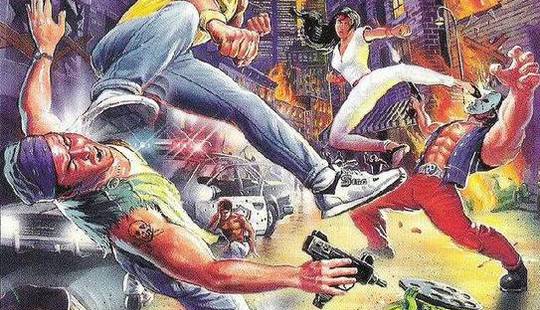
Because development hell can’t last forever, right?
Halo
This might have happened, but failed before it really started. In 2005, plans were underway to produce a Halo movie. The universe was a strong one, characters relatively well drawn, and sales were massive. But Microsoft played the hardest of financial hardball and ultimately blew it. Only one studio would accept their terms – 20th Century Fox – and soon enough they felt the project was on shaky ground. Peter Jackson and Neill Blomkamp, who’d go on to collaborate on District 9, were signed up, and Alex Garland worked on a first script. But indecision and uncertainty saw talent fall away from Halo, and today the movie rights are back with Microsoft. The company has invested in bringing the series to small screens – Halo 4: Forward Unto Dawn ran online in late 2012, with a hefty $10 million budget. But Halo really does deserve its box office opportunity.
BioShock
Plans to make a movie based on 2K’s wonderful Rapture-set adventure were announced in 2008. Gore Verbinski was to direct… but then, by the middle of 2009, it was clear that he wasn’t. Or is he? BioShock creator Ken Levine hasn’t completely ruled out a film adaptation, although with the forthcoming BioShock Infinite switching the original’s underwater setting for airborne environments, who knows what a movie might look like.
Streets of Rage
Just go with me here. Think The Warriors, but with Gareth Evans (of The Raid) directing. Think knowing, reference-strewn dialogue and bone-crunching fight scenes; bare-knuckle combat as you’ve never seen it, soundtracked by Yuzo Koshiro, the man behind the Sega games’ awesome music. It’d be great, right? Right?
Shadow of the Colossus
This is happening. If you missed the memo, in 2009 Sony Pictures were reported to be preparing an adaptation of the much-loved PS2 classic (covered in the last Savage Pixels). No release date has been announced, and nor has any information regarding a cast leaked into the public domain. But Josh Trank is signed up as director – and anyone who’s seen Chronicle knows he’s a rising talent of great potential.
Tetris
Not the foggiest. But at the very least it’d be interesting.
Five movies, based on games, that should never have been made. Seriously. They’re absolutely cack.
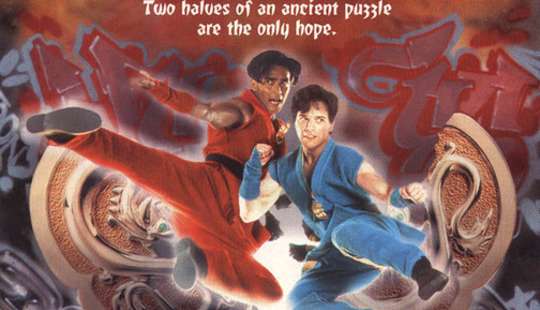
Because this is a two-way street, and for every handful of god-awful console tie-ins, there’s a shitty flick spawned by a (usually pretty decent) game. Quotes and percentage scores from Rotten Tomatoes.
Super Mario Bros (1993, 13%, Wiki)
Said Time Out: “It will baffle kids, bore adolescents, and depress adults.”
Double Dragon (1994, 0%, Wiki)
Said Variety: “Even kids won't get much of a kick out of this high-energy, low-IQ futuristic slugfest.”
House of the Dead (2003, 4%, Wiki)
Said the BBC: “It's so bad it could well go down in history as one of the worst zombie movies ever made.”
Hitman (2007, 14%, Wiki)
Said the Guardian: “This film is like watching the actual game played by someone with slow reactions. That's not much of a spectator sport.”
Doom (2005, 20%, Wiki)
Said the Chicago Sun-Times: “…like some kid came over and is using your computer and won't let you play.”
Believe it or not, this is only scraping the surface when it comes to crap movies based on games. Have you seen Wing Commander? Or Mortal Kombat: Annihilation? Or Street Fighter? Or…
Basically, go see Wreck-It Ralph and leave your curiosity for some of these monstrosities well alone.
NEXT MONTH: It’s reboots, with coverage of DmC: Devil May Cry (out now and, to skip ahead a month, well recommended) and Tomb Raider.

















